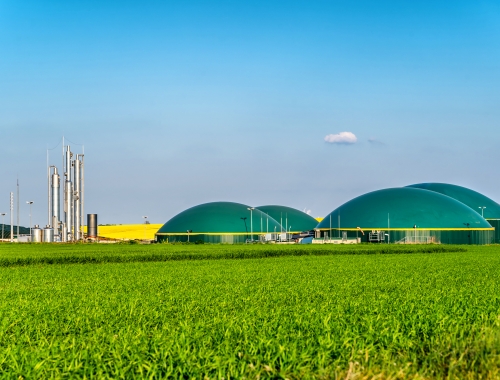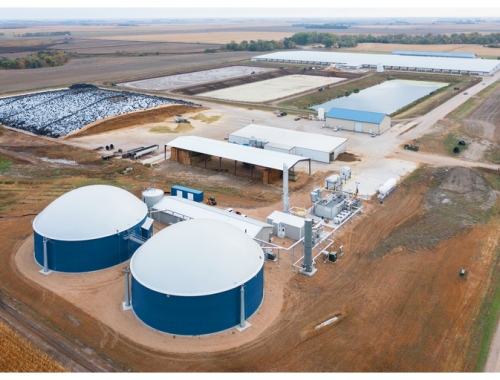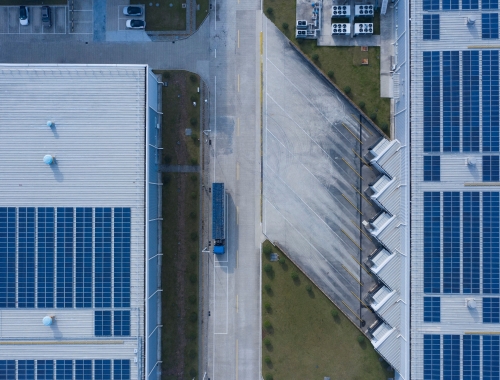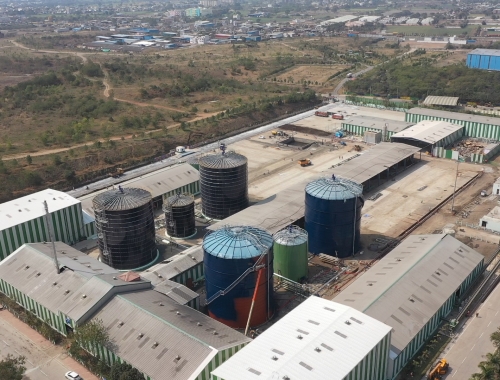American Biogas Council sees continued growth in US biogas: interview
SUMMARY
Patrick Serfass, the executive director of the ABC, shared insights into various facets of the industry and shed light on the driving forces behind this sustained growth.
By Shardul SharmaNewly released data from the American Biogas Council (ABC) indicates that 2023 was the third year of record growth across the US biogas industry, with nearly 100 new projects coming online last year – representing $1.8bn in capital investments. ABC expects this growth to continue into 2024, with more than 100 new projects already projected to go into operation this year.
Patrick Serfass, the executive director of ABC, shared insights into various facets of the industry and shed light on the driving forces behind this sustained growth in a recent interview with Gas Pathways.
The year 2023 was a record year for US biogas industry. ABC expects 2024 to be an equally strong year. What is driving this investment?
At its core, growth in the biogas industry has been driven by better societal recognition that we need to recycle the millions of tons of organic waste produced in the US every year, plus the need to reduce carbon emissions, especially methane emissions. The fact that biogas systems can do both, while providing other benefits, is finally catching on. This recognition drives project development as well as helpful policies.
Are large energy companies investing in the US biogas sector or is the industry dominated by local and independent companies/startups?
We’re very proud that the US biogas industry contains large and small companies, and those in between. It’s really true that developers of all sizes can be successful building biogas systems. The American Biogas Council provides training to help make sure projects are developed smartly and safely. There is a difference in diversity, however, when you look at who’s buying the energy from the biogas, whether it’s in the form of electricity or renewable natural gas. Most of those buyers are large companies that have to comply with federal or state policies or reduce their carbon footprint to comply with ESG standards. The larger companies are more exposed to the risks of not decarbonizing, so they’re most likely to want to buy biogas or the renewable natural gas or electricity made from it.
The landfill gas sector was the biggest in terms of output and investment but the growth in 2023 was only 4-5%. What kind of growth does ABC expects in 2024? Why is the growth lower vis a vis agriculture-based projects?
Two main facts help answer this question. First, most landfills in the US are large enough that the smallest landfill biogas projects produce approximately an order of magnitude more gas than the largest non-landfill, anaerobic digester projects that recycle food waste, manure, or wastewater sludge. Second, about 50% of the landfills appropriate for building a biogas system have been developed already, while only about 20% of the food waste, farm, and wastewater sector has been developed. So in this context, it’s not surprising to see both a larger volume of gas coming from landfill projects and greater growth in the non-landfill biogas systems. That will probably continue until more anaerobic digester systems are built, allowing the quantity of those systems to collectively overwhelm current landfill gas production.
Agriculture-based projects have seen good growth in 2023, as per ABC report. Why is that?
The simple answer is that agriculture biogas systems provide the greatest carbon emission reductions, and we have policies in place in some parts of the US that reward projects that reduce carbon emissions the most.
Here's why farm-based biogas systems reduce emissions so much: Farms without biogas systems normally store their manure in large lagoons until they’re allowed to use the raw manure to fertilize their land. Those manure lagoons emit large amounts of methane today. So when a farmer installs a biogas system, the farmer not only stops today’s methane emissions from getting into the air by capturing them, but the captured methane can also displace fossil fuel emissions when it’s used. It’s a double benefit for the air and climate. That double benefit makes most agriculturally produced biogas not only carbon negative but deeply carbon negative. So much so that one vehicle running on renewable natural gas or electricity made from biogas can reduce the equivalent of 4-7 vehicles’ emissions. An electric car running on wind or solar only replaces the equivalent of one vehicle’s emissions.
As a gas buyer, this also means that if you’re buying biogas with a carbon intensity 5 times lower than conventional natural gas, you only need to replace 20% of your conventional gas supply to get to net zero natural gas emissions.
What will be the breakup of the output and growth in the landfill, agriculture and food waste sectors for 2024?
This is hard to predict, but since we already have 30% more projects in the pipeline today than went online last year, we expect higher growth in 2024 in all sectors.
At present, most of the biogas is being used in the power generation sector. But ABC sees a robust future in the RNG space. Why is that? Which sectors in the US will drive the demand for RNG?
Biogas systems provide a large number of community benefits such as renewable energy production, emissions reductions, better soil health, opportunities to reduce water pollution and odor, pathogen destruction, new jobs, and more. But most biogas system owners only get paid today for the first one: renewable energy. As a result, until we start rewarding biogas systems for displacing synthetic fertilizers, protecting waterways, and destroying pathogens and odor, the success of different sectors of the biogas industry will be dependent on federal and state renewable energy policy. In most cases today, our energy policy rewards projects that produce renewable natural gas from their biogas better than those that produce renewable electricity from biogas. So more renewable natural gas projects are getting built and investors are usually more interested in those types of biogas projects.
ABC in its report mentions that at least 15,000 new systems could be built, compared to 2,251 operational today. What are the challenges facing the industry?
The biggest challenge is that most folks don’t know what biogas systems are, so they’re not front of mind enough for farmers, wastewater plant operators or food waste generators to build them; nor is biogas front of mind enough for policymakers to develop policies that reward the build-out of this recycling and renewable energy infrastructure. Once someone understands the science-proven benefits for air, water, soil, and local economics, it’s hard not to support growth of the industry. It just makes sense. We generally find that anyone opposing biogas projects either doesn’t have their facts straight or has some other agenda. Our society’s organic waste isn’t going away magically. If we don’t recycle it, it will forever remain a wasted resource.








